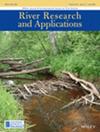在莱茵河中重新引入大西洋鲑鱼已有几十年:为什么没有恢复有生命力的种群?
IF 1.7
4区 环境科学与生态学
Q4 ENVIRONMENTAL SCIENCES
引用次数: 0
摘要
淡水物种的生物多样性正受到威胁。据估计,自 1970 年以来,全球洄游鱼类物种平均减少了 75% 以上。大西洋鲑就是其中一种在欧洲西北部急剧减少的物种,20 世纪 50 年代,它甚至在莱茵河中灭绝。造成大西洋鲑数量减少的原因包括栖息地丧失、污染、气候变化和过度捕捞。自 20 世纪 80 年代末以来,莱茵河每年都会放养大西洋鲑鱼,最初大西洋鲑鱼的数量有所上升,但随后数量再次下降。在本文中,我们阐述了近期数量下降的情况,估计了淡水栖息地不同地段的幼鱼和成鱼损失量,并阐述了近期数量下降和这些损失的潜在原因。我们发现,莱茵河的鲑鱼数量在过去二十年中迅速下降,目前产卵数量估计只有约 350-800 条。据估计,成年鲑鱼返回产卵地的比例为 0.5%-0.6%,远低于维持自我维持种群所需的 3%。许多个体在迁徙过程中消失,其中德国支流(44%)和荷兰莱茵河下游(71%)的幼体消失比例最高,而荷兰莱茵河(74%)和德国莱茵河(78%)的成体消失比例也最高。每个河段的损失原因尚不清楚,目前正在讨论可能存在的威胁,其中一些是莱茵河特有的威胁。与公海的损失相比,内陆水域的幼鱼和成鱼损失巨大,这表明莱茵河的种群恢复可能只能通过比迄今为止在密集运输和高度管制的河道沿岸以及相关的高水平捕食进行更多的生态恢复来实现种群的自我维持,而且可能会越来越受到未来气候变化的限制。本文章由计算机程序翻译,如有差异,请以英文原文为准。
Reintroducing Atlantic salmon in the river Rhine for decades: Why did it not result in the return of a viable population?
Freshwater species biodiversity is under threat. The average global decline for migratory fish species is estimated to be more than 75% since 1970. Atlantic salmon is one of these species with a steep decline in north‐western Europe and it even went extinct in the river Rhine in the 1950s. The causes for this decline have been posted to habitat loss, pollution, climate change and overfishing. Annual stocking in the Rhine since the late 1980s resulted in an initial increase in the Atlantic salmon numbers after which numbers collapsed again. In this paper, we lay out the recent decline, estimate losses of smolts and adults at different sections in the freshwater habitat and elaborate on potential causes of the recent decline and these losses. We found that the salmon population of the river Rhine has declined rapidly over the past two decades, with a current estimated spawning population of only ~350–800 individuals. The percentage of salmon smolts returning as adults to spawning grounds is estimated at 0.5%–0.6%, well below the 3% supposedly needed to maintain a self‐sustaining population. Many individuals disappear during their migrations, with the highest percentage of smolts disappearing in the German tributaries (44%) and the Dutch lower Rhine (71%), while the percentage of disappearing adults is highest in both the Dutch (74%) and the German (78%) Rhine. Causes for the losses per river section remain unclear and possible threats, some specific to the river Rhine, are being discussed. The large losses of smolts and adults in inland waters, compared with open sea losses, indicate that restocking the river Rhine might only result in a self‐sustaining population with more ecological restoration than carried out so far along the intensively shipped and highly regulated river course and associated high levels of predation, and might be increasingly limited by future climate change.
求助全文
通过发布文献求助,成功后即可免费获取论文全文。
去求助
来源期刊

River Research and Applications
环境科学-环境科学
CiteScore
4.60
自引率
9.10%
发文量
158
审稿时长
6 months
期刊介绍:
River Research and Applications , previously published as Regulated Rivers: Research and Management (1987-2001), is an international journal dedicated to the promotion of basic and applied scientific research on rivers. The journal publishes original scientific and technical papers on biological, ecological, geomorphological, hydrological, engineering and geographical aspects related to rivers in both the developed and developing world. Papers showing how basic studies and new science can be of use in applied problems associated with river management, regulation and restoration are encouraged as is interdisciplinary research concerned directly or indirectly with river management problems.
 求助内容:
求助内容: 应助结果提醒方式:
应助结果提醒方式:


